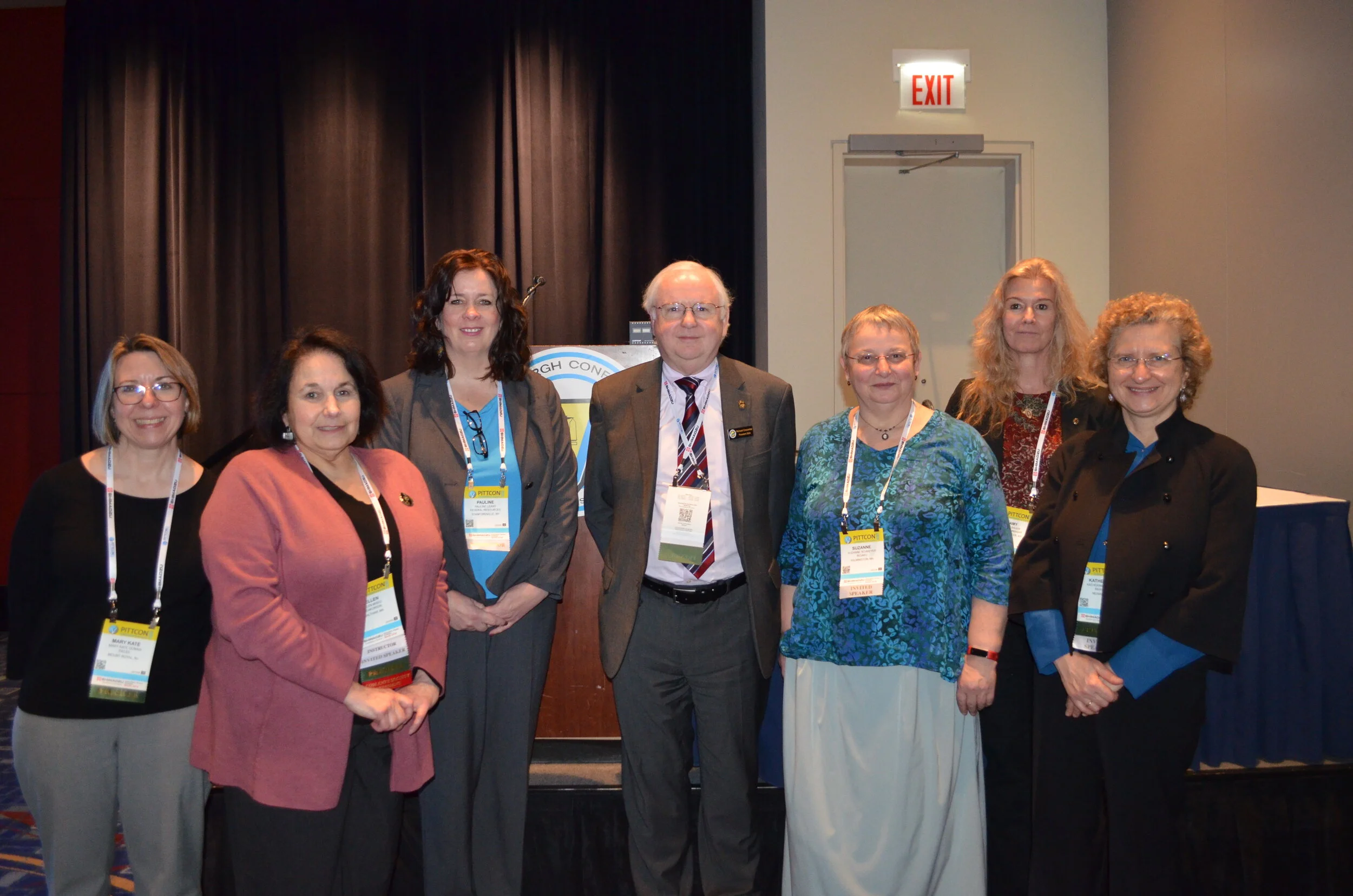March 2020 - Pittsburgh Conference Symposium 1
SAS organized two symposia this year at Pittcon. The first, on the Monday of the Conference, was entitled, “Smartphone Spectroscopy for analyses and assays in low resource areas”, and had an international speaker panel. The first speaker, Olivier Burggraaff (Leiden University, the Netherlands, “A Smartphone Add-on for Spectrometry and Polarimetry”) described how to obtain scientific quality data from a smartphone camera, and then how, by equipping thousands of citizens with a low-cost smartphone attachment, how ‘citizen science’ studies can be conducted. Russ Algar (U. British Columbia, Canada, “The Right Tool for the Job: Optimum Fluorescent Materials for Smartphone-based Bioanalysis”) described how as semiconductor quantum dots (QDs) and semiconducting polymer dots (Pdots), have superior fluorescence properties that address many of these shortcomings of smartphone cameras, and enable new possibilities. Aldo Roda (U. Bologna, Italy, “Chemical Luminescence-based Smartphone Biosensor : A Simple Tool for Portable Diagnostics in Developing Countries”) discussed chemical luminescence-based probes in which photon emission is triggered by a dark chemical reaction, and how these can address point-of-need requirements. Brian Cunningham (U. Illinois, “Compact Spectroscopy for Quantitative Analysis of Colorimetric Assays at the Point of Care”) outlined their development of a battery-operated, handheld instrument and assay approach that automates performing an Enzyme Linked Immunosorbent Assay (ELISA) in a single step. In addition, he described a novel optical component called a Single Layer Linear Variable Filter (SL-LVF) that enables a photodetector array chip to capture kinetic colorimetric absorption spectra “movies” from multiple microfluidic lanes within the cartridge. The last talk in this symposium was given by David Erickson (Cornell U., “Optically based Point-of-Care Diagnostic Technologies for Infectious Diseases and Nutritional Deficiencies”). He discussed some of the technologies and approaches to enable point-of-care diagnostics for vitamin and micronutrient deficiencies, and infectious disease related cancers like Kaposi’s Sarcoma. The device they have developed (“TINY”), the Tiny Isothermal Nucleic acid quantification sYstem, has shown promise as a point-of-care detector of Kaposi sarcoma-associated herpes virus (KSHV), in resource-limited settings such as sub-Saharan Africa, notably during field trails in Uganda.
In the picture, from left: Brian Cunningham (U. Illinois), Olivier Burggraaff (Leiden U.), Aldo Roda (U. Bologna), Richard Crocombe (SAS), David Erickson (Cornell U.) and Russ Algar (U. British Columbia). Photo by Luisa Profeta, for SAS.




